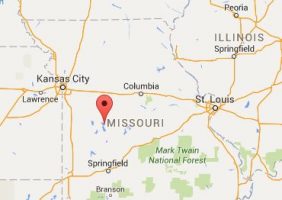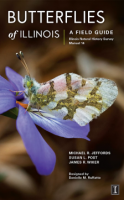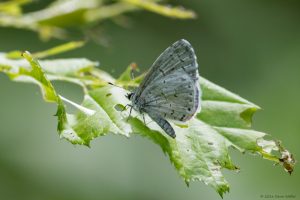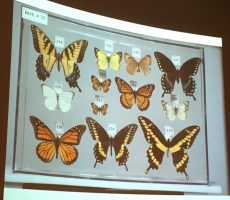By Dawn Weber
Board Member-at-Large, Wild Ones – St. Louis Chapter
 On May 23-25, 2016, the Missouri Department of Conservation (MDC) hosted a Butterfly and Skipper ID workshop in Warsaw, MO. Warsaw, in case you’ve not heard of it, is located south of Sedalia near Truman Lake, on the western side of the state. Because the workshop was almost three hours from St. Louis, I wasn’t sure who would attend or if I would know anyone. I was very happy when I walked through the door and saw Bob Siemer and Ann Earley also attending!
On May 23-25, 2016, the Missouri Department of Conservation (MDC) hosted a Butterfly and Skipper ID workshop in Warsaw, MO. Warsaw, in case you’ve not heard of it, is located south of Sedalia near Truman Lake, on the western side of the state. Because the workshop was almost three hours from St. Louis, I wasn’t sure who would attend or if I would know anyone. I was very happy when I walked through the door and saw Bob Siemer and Ann Earley also attending!
More exciting than that, I met several people who, up until that point, I’d only known “electronically”, via various Facebook groups, even some folks from Audubon Arkansas. Also, there were attendees from MDC, Forest Park Forever, the Butterfly House, Missouri Prairie Foundation, and several Missouri Master Naturalists chapters.
The workshop leader was Jim Wiker, a research associate of the Illinois State Museum and an affiliate of the Illinois Natural History Survey. He is a well-known Illinois lepidopterist (a person who studies or collects butterflies and moths), senior author on the definitive guide to the sphinx moths of Illinois, and an author of another book on the skipper butterflies of Illinois.
The registration for this workshop opened in December of 2015 and filled up quickly.
We were asked to bring the following field guides:
Butterflies of Illinois: A Field Guide
Field Guide to The Skipper Butterflies of Illinois
One other book I brought was:
A Photographic Field Guide to the Butterflies in the Kansas City Region, and the author Betsy Betros was in attendance.
It was helpful to have multiple pictures from different sources, of the same butterflies and skippers, so that I could see the amount of variation that can occur within the same species.
On our first afternoon, we went out in the field to Big Buffalo Creek Conservation Area. It was very humid and the butterflies were scarce, but we found a few to study, by netting and placing in a jar that could be passed around for a closer look. Summer azures were plentiful, along with eastern tailed-blues and little wood-satyrs. After that first field trip, we didn’t head out into the field again because it was raining.
At that point, I wasn’t sure how well the workshop would turn out. Little did I know that Jim saw the dreary weather report ahead of time and created more than 20 clear plastic boxes of previously collected specimens for us to identify. The specimens were pinned in the boxes in such a way that you could see both the top and bottom sides of each wing, something that is hard to do with live butterflies.
The process was to take a box from the table, work to identify the butterflies and skippers in that box, and write down your answers. There would be a review at the end of the workshop to reveal the IDs and walk through some of the trickier identifications. Many folks in the crowd were eager to work on the boxes and try to finish all of them, including our own Bob Siemer.
We spent a lot of time in the movie auditorium of the Truman Dam visitor’s center listening to speakers presenting, from basic topics in entomology (the study of insects), to overviews of different families of butterflies, to learning about Jim’s work to document populations of the endangered rattlesnake-master borer moth.
The second evening of the three-day workshop was the most valuable to me. For several hours (Bob and Ann outlasted me!), we worked on identifying specimens. Jim was there with us, which gave opportunity to ask questions, see how he would approach an ID, and validate our process.
At the end of the workshop, when the ID answers were revealed, Bob, Ann, and I had done pretty well as a team and Bob was sad to see “the boxes” come to an end. I don’t know if Ann and I would say the same!
I came away from the workshop feeling much more confident in my identification skills, and I learned that sometimes even the experts just have to say “I am not sure”.
Now I just need more butterflies and skippers to find their way to my yard full of native plants, so that I can practice my new skills! I’m hoping that MDC will host a similar workshop on native bee identification. I could use help there too.





I am going to send you a photo of a butterfly to ID. Sounds like fun.
I’ll surely give it a try 🙂
Great blogpost. Makes me wish I had been there!
Thanks Ed!! It was a great workshop